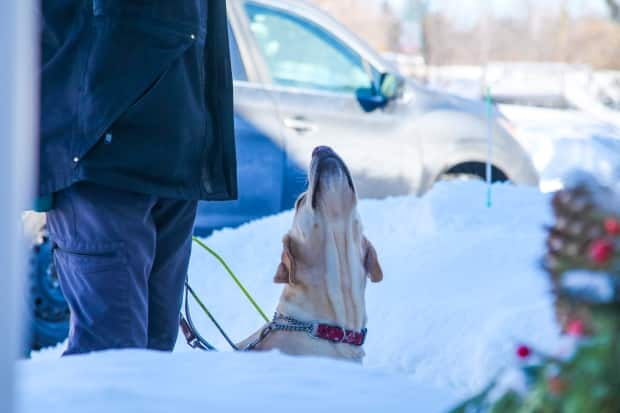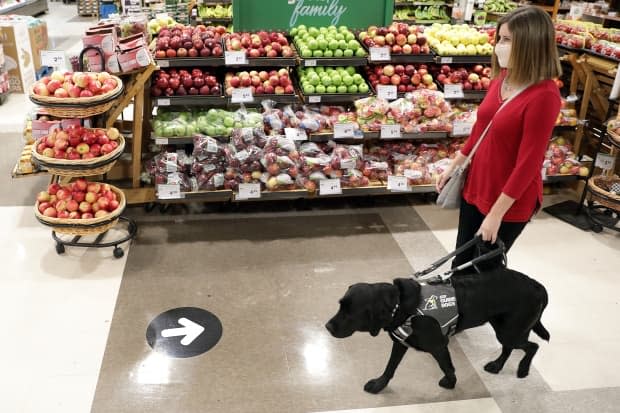Guide dogs trained during pandemic will be ready, agencies insist

The two main Canadian agencies that prepare puppies for a life guiding people with visual impairments say the unrealistic times of the pandemic won't prevent them from turning out well-prepared guide dogs.
Canadian Guide Dogs for the Blind (CGDB), based in Manotick, Ont., and Canine Campus, based in Carleton Place, Ont., prepare young labs, retrievers and the occasional shepherd to understand traffic, crowds and indoor etiquette for the Canadian National Institute for the Blind's Guide Dogs program.
"We want to expose them to as much as we can so they think it's just a part of normal life and so it doesn't throw them for a loop when they're guiding through it," said CGDB manager Alex Ivic.

A subway platform jammed at rush hour or a holiday visit to a house filled with screaming children, and the alluring smells of a roasting goose are just some of the experiences a guide dog-in-training couldn't get this year.
Instead, the lack of crowds and retail closures have forced trainers to dream up creative ways to prepare the dogs for real world situations.
"We needed to reinvent what we did and or be clever and creative in tweaking things we already did," said Ivic.

Staged apartments and empty airport used for training
Ian Hadlum, a trainer with CGDB, dons a blindfold and encourages two-year-old Dahlia to lead him down a walking path obstructed by construction barriers.
The black lab gently nudges him to step off the path and safely around the pylons, her tail constantly wagging.
Dogs have been conquering their fear of escalators in the mostly silent Macdonald–Cartier International Airport.

Others have been attending pretend tea parties in staged apartments where the furniture is constantly moved around.
At CGDB, the pandemic shut down their normal eight-person, three-week residency training program where clients move in and learn how to live with their new guide dogs.
It's been replaced with a two-week program working with one client, meaning fewer teams will graduate.
Dogs might need tune-ups
Costs at CNIB's guide dog school have gone up, as have those at CGDB, which depends heavily on donations.
"I know we say it rains cats and dogs, but it doesn't actually, so we can't just produce a dog immediately," points out Diane Bergeron with the CNIB.
Her program's Australian supply of retrievers has been blocked by border closures.
At the same time, restrictions on gatherings and visiting in places across the country, more people with vision loss have contacted the CNIB about how to regain their independence by connecting with a guide dog.
Bergeron said COVID-19 restrictions on training may mean new guide dogs might have to come back for tune-ups in the future.
Ivic said even though the dogs will have been raised in a pandemic, they will be capable of extrapolation — figuring out the new normal whenever it arrives and whatever it looks like.
Yet, trainers point out that a guide dog will normally spend the first 18 to 24 months of its life in training, so there is still time to cover the curriculum.

